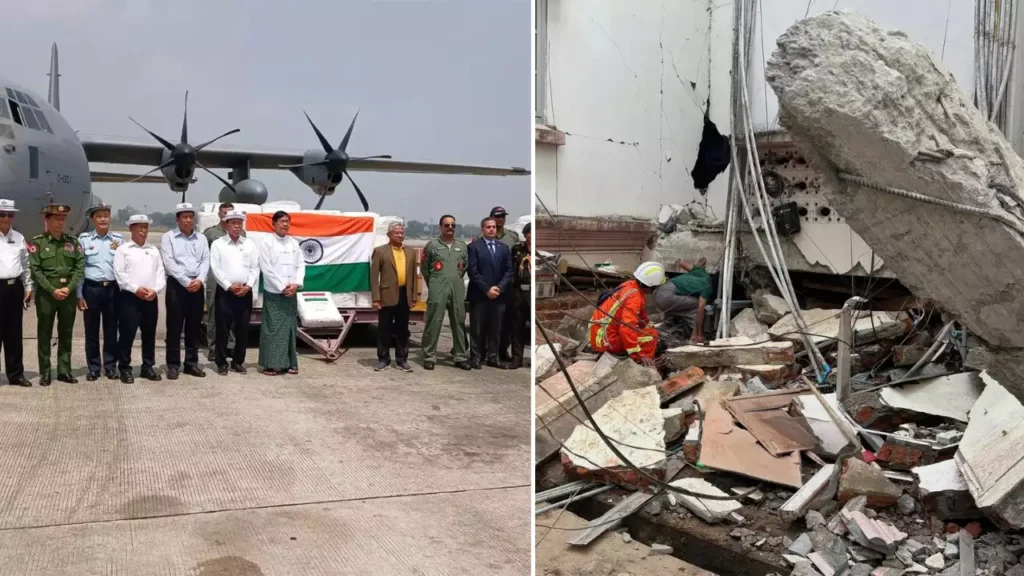Operation Brahma: India’s Humanitarian Response to the Myanmar Earthquake


On March 28, 2025, a devastating 7.7-magnitude earthquake struck Myanmar, claiming the lives of more than 3,300 people and causing widespread destruction across the country. In a swift and compassionate response, India launched Operation Brahma, a large-scale humanitarian assistance initiative designed to provide immediate relief and long-term support to the earthquake-hit areas.
Operation Brahma was initiated as a unified effort by the Government of India to assist Myanmar during this humanitarian crisis. The mission was a multi-agency operation involving various arms of the Indian government, armed forces, and disaster management agencies. Its main goals were to deliver essential relief supplies, establish critical healthcare infrastructure, and support ongoing rescue and recovery operations on the ground.
The mission exemplified India’s proactive approach to regional disaster relief, underscoring its commitment to supporting neighboring nations in times of crisis.
India deployed significant resources under Operation Brahma, reflecting its strong logistical capabilities and readiness to respond to large-scale emergencies:
Humanitarian Aid and Disaster Relief (HADR):
By April 1, 2025, India had sent six aircraft and five naval vessels carrying around 625 metric tonnes of relief materials to Myanmar. These supplies included food, water, shelter equipment, clothing, medical kits, and other essentials required for survival and early recovery.
Medical Support:
A dedicated medical task force from the Indian Army’s 50th Parachute Brigade, consisting of 118 personnel, was deployed to provide immediate healthcare support. This unit established a 60-bed Medical Treatment Centre equipped to handle trauma injuries, perform emergency surgeries, and treat a wide range of medical conditions. The mobile facility played a vital role in supplementing Myanmar’s overwhelmed healthcare infrastructure.
Search and Rescue Efforts:
Teams from the National Disaster Response Force (NDRF) were dispatched to assist in locating and rescuing survivors trapped under debris. These highly trained personnel used advanced equipment and coordinated closely with local authorities to carry out time-sensitive rescue operations, helping save countless lives.
Beyond its humanitarian scope, Operation Brahma also carried significant diplomatic weight. The mission highlighted India’s standing as a dependable regional partner and its growing role as a first responder in South and Southeast Asia.
Anchored in India’s “Neighbourhood First” policy, the operation served as a powerful expression of solidarity with Myanmar. It reinforced bilateral ties while showcasing India’s capability to undertake complex humanitarian and disaster relief missions across borders. The timely and effective response was widely acknowledged and appreciated by the international community.
Operation Brahma stands as a powerful example of India’s commitment to humanitarian values, regional cooperation, and strategic diplomacy. The scale and speed of the response, the professionalism of the deployed teams, and the comprehensive nature of the assistance provided highlight India’s evolving role as a leader in regional disaster management.
The operation not only delivered life-saving aid to thousands of people in Myanmar but also reaffirmed the strong and enduring partnership between the two nations. In the wake of tragedy, Operation Brahma brought hope, healing, and a renewed sense of solidarity between neighbors.